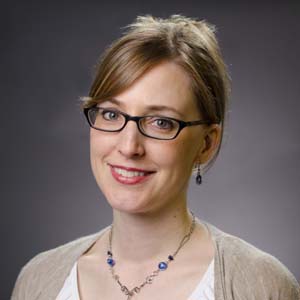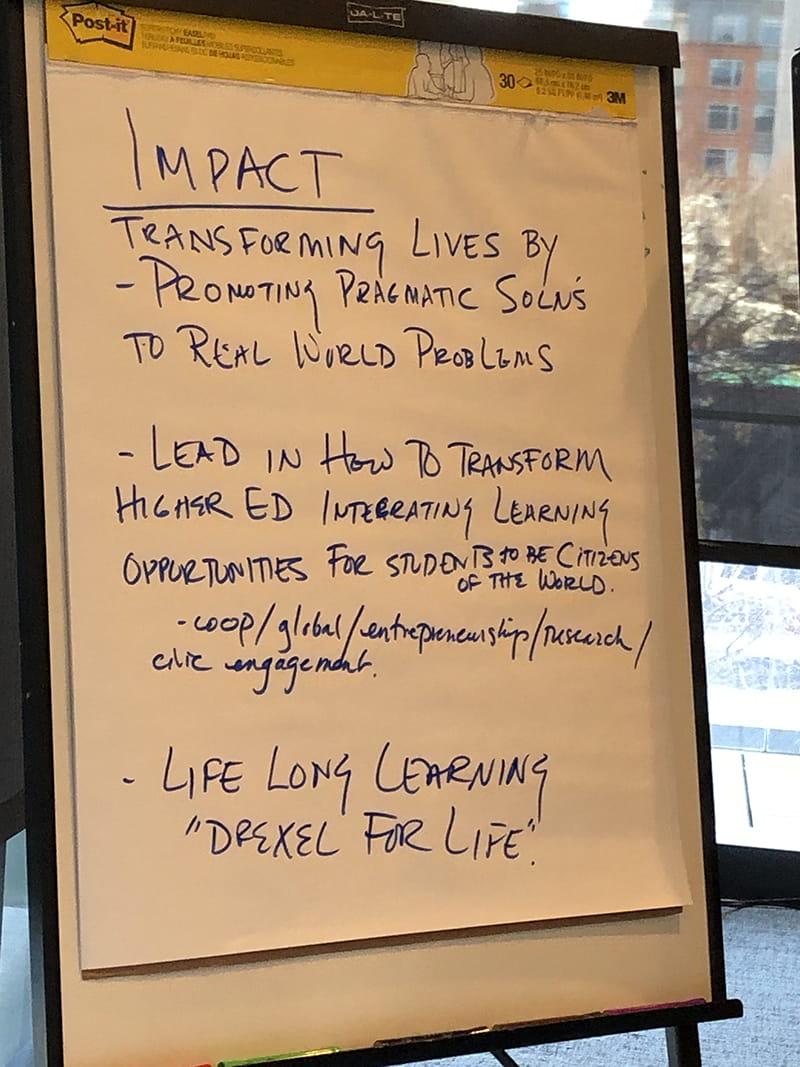Where Do We Want Drexel To Be in 10 Years?
 By Sonja Sherwood
By Sonja Sherwood

The debut of a new decade means it’s time for Drexel University to draft a fresh 10-Year Strategic Plan, and this one bodes to be among the most important the University has ever undertaken.
An Executive Planning Committee (EPC), chaired by President John Fry, is in charge of developing the plan by next fall and keeping the Drexel community apprised of its progress (see list of members below). The committee gathered for the first time in October and has been meeting twice per month since then. Members also attended a full-day retreat before winter break.
Starting later this month and continuing through March, members of the committee will meet with the colleges and schools to seek input. There will be regular updates and opportunities for feedback on the plan throughout the spring and summer.
“This is about making it a two-way conversation,” said Fry. “We want to hear from faculty, staff and students about what they think is most important for Drexel’s future. In the coming weeks and months, there will be many opportunities for everyone to share ideas.”
This year’s planning process is especially critical, says Nina Henderson Interim Provost Paul Jensen, PhD, because it will impact how the University adapts to technological disruption, an upcoming drop in high school graduates and anticipated declines in international students.
“Most people expect higher education to look significantly different in 10 years,” said Jensen. “You have three significant changes all coming together at the same time that are each tremendously disruptive to higher education. We have to educate our students differently in light of these changes. That’s why this planning process is critical.”
The new Strategic Plan will identify the University’s top priorities through 2030. Drexel’s last major Strategic Plan paved the path for improving the student experience, ensuring the long-term stability of the College of Medicine, making investments in civic engagement and developing Schuylkill Yards and uCity Square, among other goals.

A tremendous amount of collaborative groundwork has already been laid. Over a year ago, Fry convened a pre-planning group of about 80 members drawn from both faculty and administrators. He charged them with putting “everything on the table” — to step outside their roles and think big about the future of the institution. They gathered information on overall institutional effectiveness, retention and academic resources, and they developed a document called “Thinking Forward.”
Out of that productive process came discussions about the quarter system, the optimal size of the student body and research infrastructure investments. More recommendations were generated than can be feasibly pursued, and there were debates about how best to translate plans into action.
The next step requires choosing priorities from among these proposals. In October, based on recommendations from the “Thinking Forward” report, President Fry formed the Executive Planning Committee (EPC) to do just that: To share recommendations with the colleges and distill them into a coherent, achievable set of goals to be released next fall.
“I hope that the meetings [starting this month] provide an opportunity for open dialogue,” said Associate Professor of Management in the LeBow College of Business Jonathan Ziegert, PhD, who serves on the Executive Planning Committee. “Given their roles across the University, faculty and staff can provide unique insights and perspectives that can help shape the strategic direction of Drexel.”
After the Strategic Plan is completed, the committee will remain intact and continue to monitor the plan’s implementation. “My hope is that the efforts of the EPC will position Drexel to respond to challenges and opportunities in the years ahead, while remaining innovative, engaged and forward-thinking,” said Fry.
The 22-person committee, selected by President Fry and Faculty Senate Chair Kevin Owens, PhD, represent a balance of faculty and administrative members.
Strategic Plan | Executive Planning Committee
- Libby Blankenhorn, PhD, Professor, College of Medicine
- Helen Bowman, Executive Vice President, Treasurer and Chief Operating Officer
- James Connell, PhD, Associate Professor, School of Education; Research Fellow, A.J. Drexel Autism Institute
- Rena Cumby, Associate Professor, Westphal College of Media Arts & Design
- Lori Doyle, Senior Vice President, University Communications
- Dan Filler, JD, Dean, Thomas R. Kline School of Law
- Mark Freeman, Vice Provost, Planning & Institutional Research
- John Fry (Chair), President
- Laura Gitlin, PhD, Dean, College of Nursing and Health Professions
- Erin McNamara Horvat, PhD, Senior Vice Provost, Faculty Affairs
- Paul Jensen, PhD, Nina Henderson Interim Provost
- Brian Lorigan, Assistant Vice President, Strategic Financial Services
- Michele Marcolongo, PhD, Department Head and Professor, College of Engineering
- Don McEachron, PhD, Teaching Professor and Coordinator for Academic Assessment, School of Biomedical Engineering, Science & Health Systems
- Kevin Owens, PhD, Chair of the Faculty Senate and Associate Professor, College of Arts and Sciences
- Darin Pfeifer, Associate Vice President and University Secretary
- Aleister Saunders, PhD, Executive Vice Provost, Research and Innovation
- Evelyn Thimba, Senior Vice President, Enrollment Management
- David Unruh, Senior Vice President, Institutional Advancement
- Elisabeth Van Bockstaele, PhD, Senior Vice President, Graduate and Online Education and Dean, Graduate College
- Antonios Zavaliongos, PhD, A.W. Grosvenor Professor, College of Engineering
- Jonathan Ziegert, PhD, Associate Professor and Assistant Department Head, LeBow College of Business